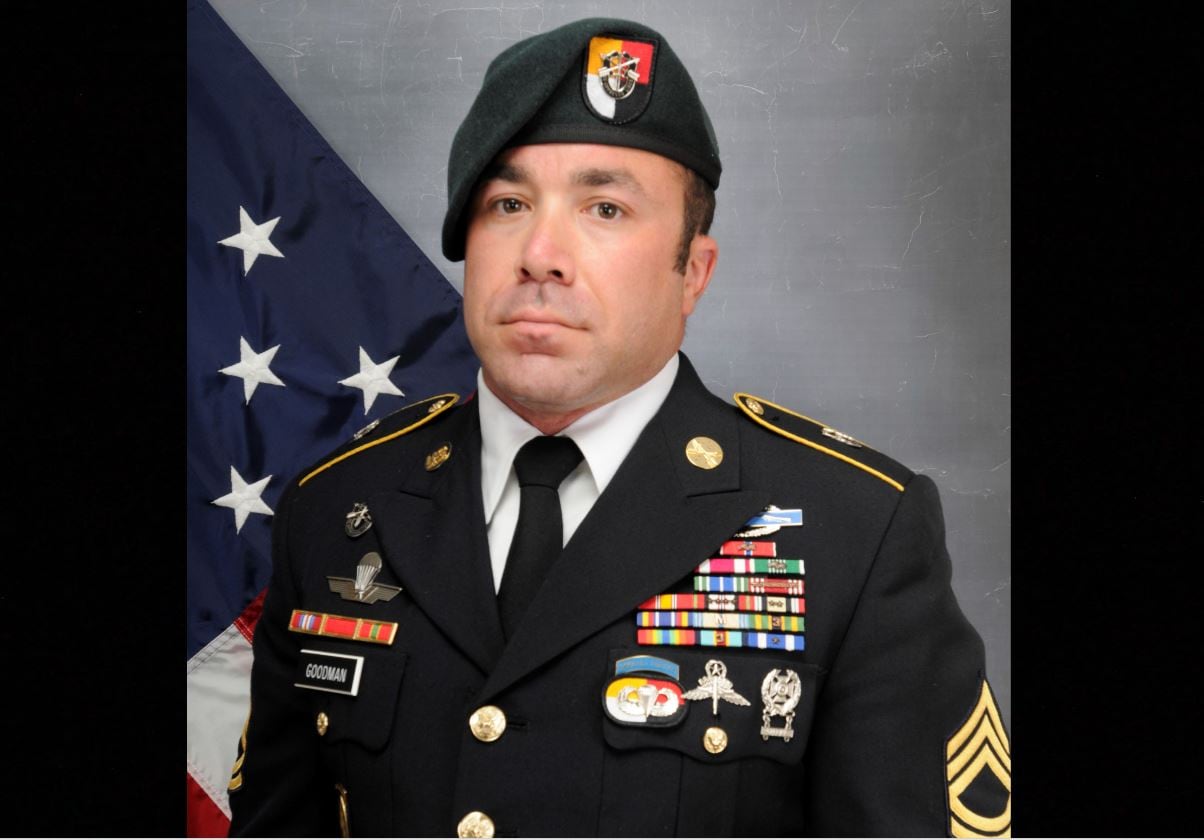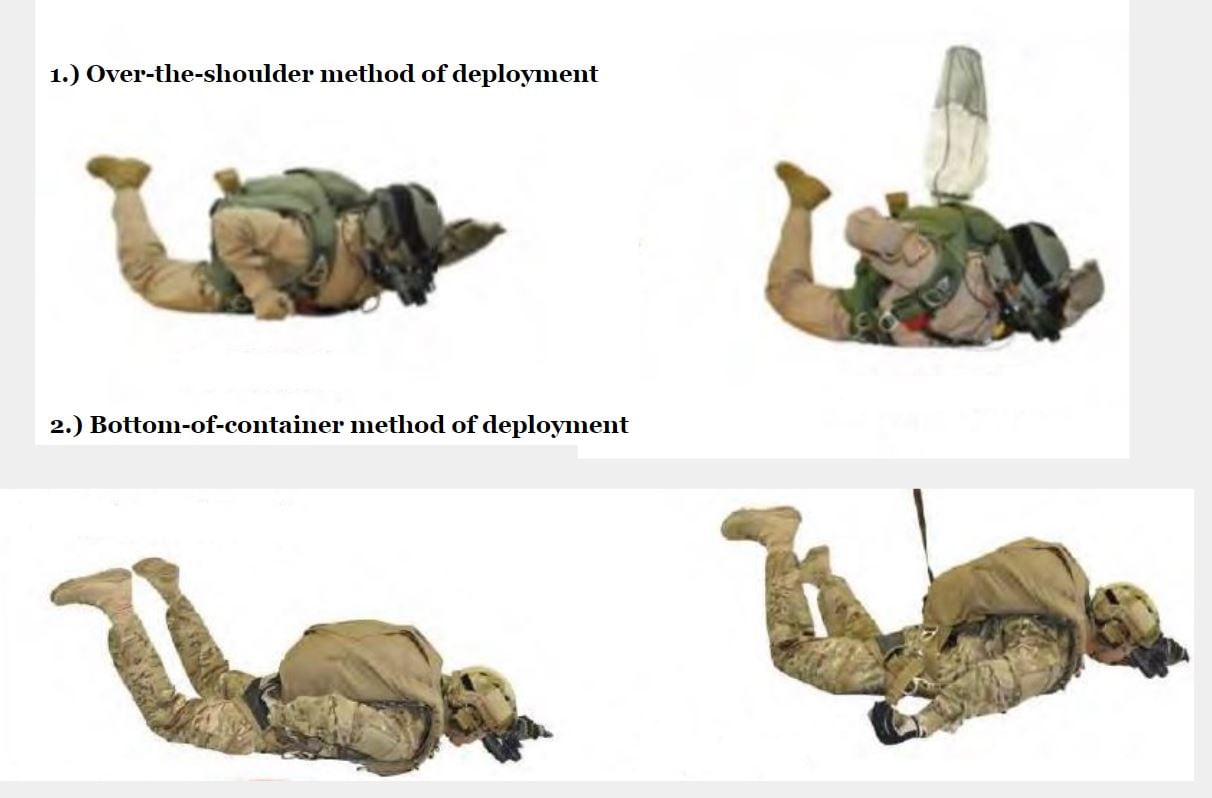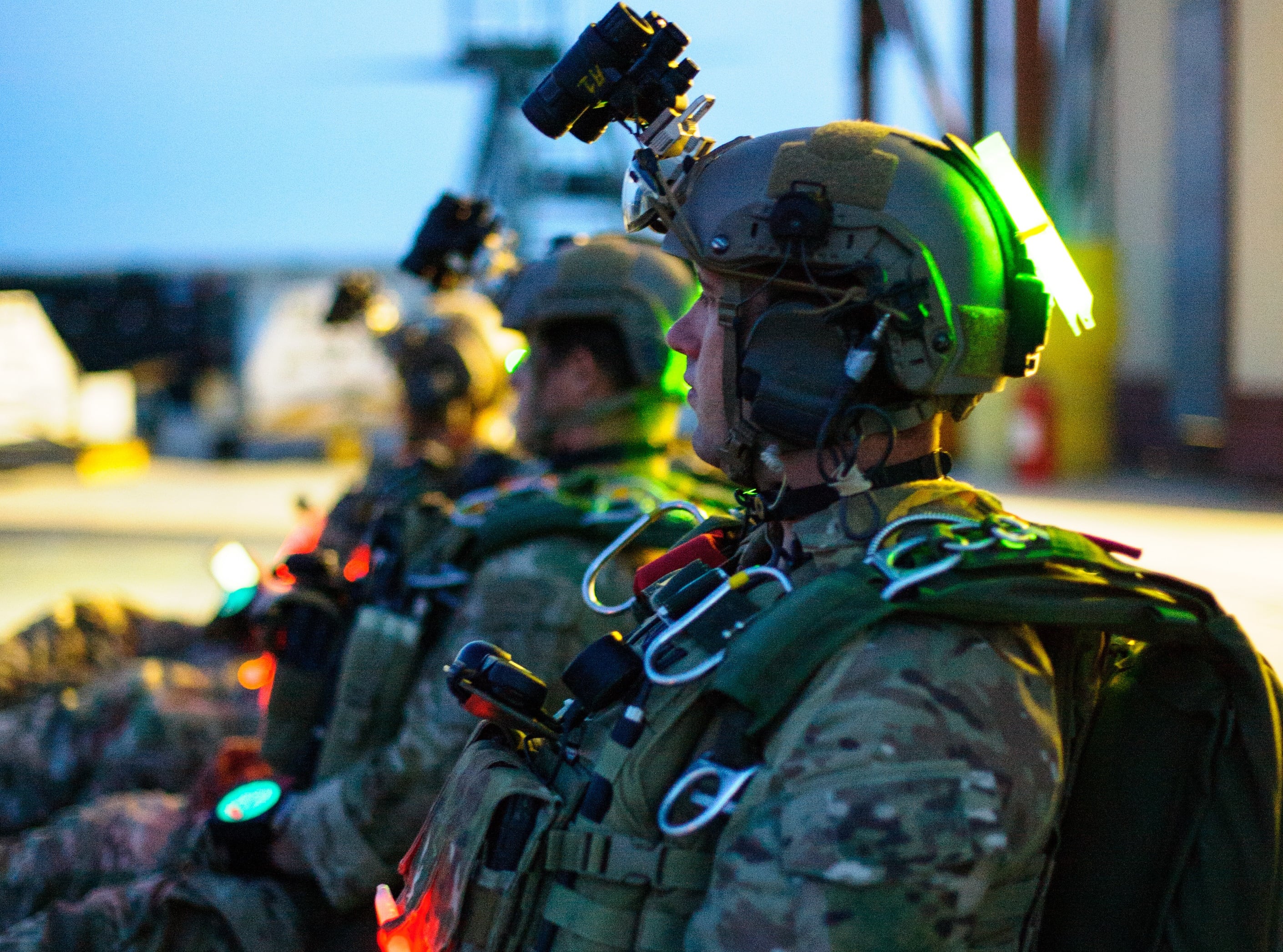Master Sgt. Nathan Goodman’s exit at 11,000 feet above the Arizona desert “looked good" to the free-fall parachutist leaving the twin-turboprop aircraft just behind him.
But after leaping into the night sky Jan. 13, the 36-year-old Green Beret with more than 200 free-fall jumps became unstable as he reached for the bottom of his rig to throw out the pilot chute, which catches wind and drags out the main canopy, a line-of-duty investigation determined.
Goodman “most likely dipped his right shoulder" when he reached back, destabilizing him as he fell, laden with full combat equipment and breathing from an oxygen mask, according to the investigation obtained by Army Times through the Freedom of Information Act.
Goodman’s “main parachute and lines deployed around him and became entangled in his [night vision goggles] and even possibly other equipment,” the document reads. He attempted to cut away from his main canopy and deployed his reserve chute, but once again the lines became fouled around him.
A team sergeant with 3rd Special Forces Group at Fort Bragg, North Carolina, Goodman had transitioned to a new style of parachute deployment on Jan. 9, several days before the mishap that took his life.
The investigation launched the formation of a working group this summer, according to Army Special Operations Command spokesman Col. Tage Rainsford.
Normally, jumpers are trained to pull a ripcord located on their right shoulder, which launches a spring-loaded pilot chute and deploys the main canopy. But during the jump trip, Goodman was re-trained on a method that requires the jumper to reach down to the bottom of their rig to grasp a hand-deployed pilot chute that they then throw into the wind.
The method may be newer for military jumpers, but it is common among civilian skydivers. It is also regularly used by Military Free-Fall School instructors at Yuma Proving Ground, Arizona.
Army special operators qualified in free-fall are required to transition to the hand-deployed pilot chute method, according to April 2019 training guidance cited in the investigation. The new method is ultimately safer and considered the “current industry standard,” according to Rainsford.
“It is a simple and secure deployment method and almost completely eliminates the possibility of a pilot [chute] hesitation during deployment,” said Rainsford, adding that it also helps standardize the deployment methods used by instructors and students.

But the investigation into Goodman’s mishap highlighted a concern that the new method, which requires jumpers to reach back rather than simply grab the ripcord at their shoulder, could introduce range-of-motion issues for some individuals, especially when loaded down with combat equipment.
That concern was also shared in military training slides, dated to September 2019, which were discussed in the investigation.
“While the use of a [hand-deployed pilot chute] system is safer, it does pose a greater risk to parachutists that cannot conduct a stable exit, stable free-fall or maintain heading control throughout the deployment," the slides stated.
The investigating officer recommended a working group be formed to discuss potential issues with transitioning to the new method and help adjust regulations. The officer also said protocols could be improved to address the range-of-motion issues some jumpers may experience.
Those recommendations were approved this June by Lt. Gen. Francis M. Beaudette, who helms Army Special Operations Command.
RELATED

Rainsford said the working group has already met several times. Greater mobility requirements and more stringent physical examination procedures have also been implemented during pre-jump training, he added.
Goodman was officially signed off on the new deployment method Jan. 9 during the trip to Skydive Arizona, a private facility outside Phoenix.
His transition to the new method “went well," though he did tend to de-arch his back slightly and slowly move forward when he reached for the pilot chute, the investigation stated. On video recordings of his three required transition jumps, Goodman “exhibited signs of instability,” which is common when jumping combat equipment, the investigating officer wrote.
But the instructor who jumped alongside Goodman and monitored his progress was comfortable signing off on his certification. That instructor had more than 2,500 jumps and was employed by the Army’s Natick Labs.
Both prior to and during the jump trip, Goodman had complained of right shoulder pain. A 5-foot-7-inch, 200-pound veteran of eight combat tours, Goodman’s shoulder issues were easy to attribute to soreness from working out and simply getting older.

The shoulder pain was mentioned throughout the investigation, but whether or not it played a role in the mishap was not stated.
Goodman seemed to have no trouble flying in a wind tunnel with his right hand behind his back before the Arizona trip. And prior to his death, he successfully jumped 13 times with the new deployment method.
On the night of the accident, Goodman’s team was conducting a high-altitude, high-opening jump, or HAHO, from a civilian Skyvan aircraft. The HAHO called for each jumper to exit, stabilize and hand-deploy their pilot chute in about four seconds, rather than free-fall for a significant period of time.
HAHOs give jumpers time to find one another under canopy, line up and fly together in a stack over great distances to reach an objective.
Goodman, who served as the primary jump master for his team, was second-to-last out of the Skyvan and should have been one of the highest men in the stack. But as the other jumpers lined up under canopy and flew toward the drop zone, Goodman wasn’t present.
One jumper described to investigators what he believed to be a chem-light falling freely to the ground and believed he observed a partially inflated canopy do three complete rotations while dropping fast.
An automatic activation device, known as a Cypres, on Goodman’s RA-1 parachute rig did work as planned. The device calculates a jumper’s rate of descent by measuring barometric pressure in the air. If a jumper exceeds a preset threshold, the Cypres activates, cuts the reserve chute’s closing loop and deploys it.
“In this case, the Cypres [device] worked properly, but because the reserve was most likely tangled around MSG Goodman’s body and equipment, it was ineffective,” the investigation reads.
Because Goodman’s reserve chute was wrapped around his body and equipment, he was unable to generate lift before he hit the ground. Both Goodman’s main and reserve chutes were packed correctly, the investigation stated.
The main canopy was found nearly a mile from Goodman. Other pieces of equipment were similarly scattered. Goodman himself was found roughly six miles from his intended target.
Another recommendation in the investigation was to have the soldier in charge wherever hand-deployed pilot chute transitions are taking place make the final decision as to whether a trainee needs remedial training.
“This should not be based on number of jumps but grader’s observations and recommendations,” the investigating officer wrote. “If [a] jumper exhibits instability on more than three jumps, instructors/graders will begin monitoring jumper more closely and capturing feedback on camera, as well as provide written feedback.”
That recommendation has also been implemented. Both the primary jump master and the airborne commander “have the final say on the decision to continue with training or sit down jumpers as they take a pause to conduct retraining," Rainsford said.
Kyle Rempfer was an editor and reporter who has covered combat operations, criminal cases, foreign military assistance and training accidents. Before entering journalism, Kyle served in U.S. Air Force Special Tactics and deployed in 2014 to Paktika Province, Afghanistan, and Baghdad, Iraq.




